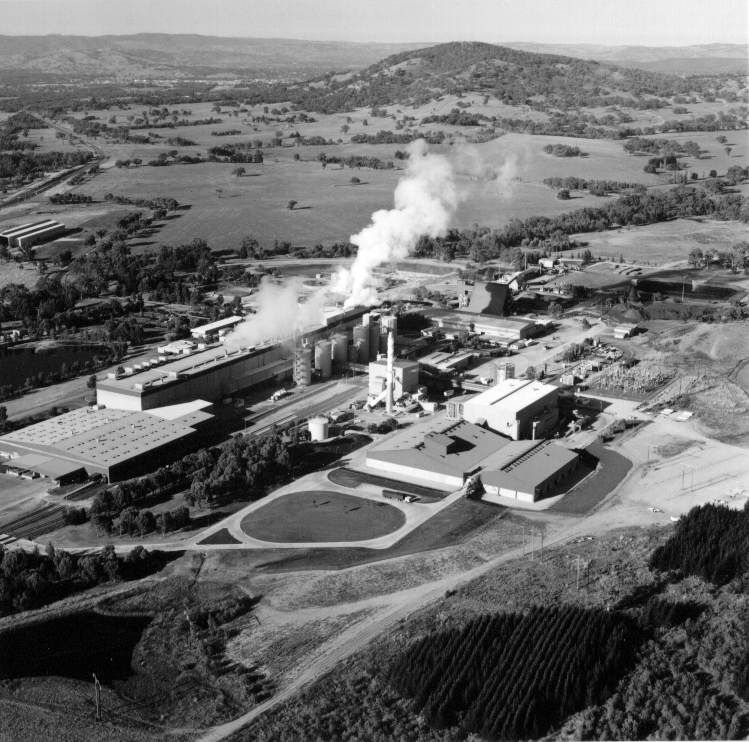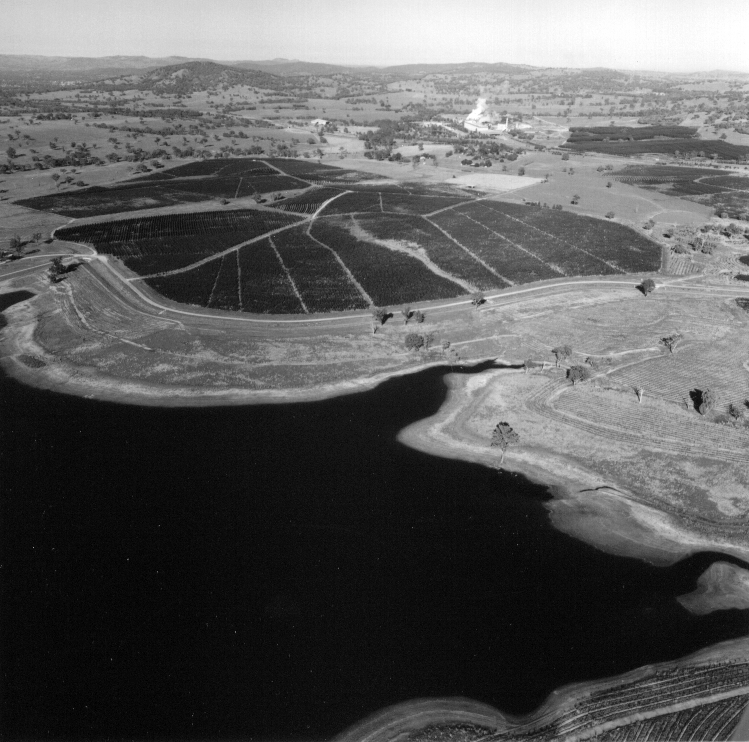
Australian Newsprint Mills (ANM) has manufactured newsprint at its Albury operation since 1981. It converts some 310,000 tonnes of Pinus radiata thinnings waste and 160,000 tonnes of recycled fibre pulp per year into paper each year.
The ANM plant uses heat and mechanical processes to convert Pinus radiata into newsprint. The plant operates a five stage wastewater treatment plant with a large holding pond. On average 14 million litres of wastewater per day was discharged to the Murray River. The solid waste generated at the plant was sent to landfill.

Australian Newsprint Mills, Albury
The principal environmental concern arising from ANMís Albury operations was the impact on water quality in the Murray River, and the subsequent impacts upon downstream water users. As part of plant upgrades, ANM has:
- established water quality monitoring and toxicity testing of Murray River waters.
- investigated alternatives to river disposal of treated effluent.
- developed a solid waste management plan.
- adopted the environmentally preferred hydrogen peroxide process for paper brightening rather than traditional methods which have an adverse environmental impact. Traditional agents are sulphur based and produce foul odours.
- constructed a two-stage recycled paper-process which has resulted in 160,000 tonnes per year of wastepaper (110,000 tonne of recycled newspapers and 50,000 tonne of recycled magazines) being utilised for newsprint production. In addition 46,000 tonnes per year of de-inked pulp is sent to the ANM Boyer plant in Tasmania for processing.
- established a 375,000 tree woodlot which is used for irrigation of treated plant effluent. Discharge of effluent to the Murray River now only occurs under extremely adverse weather conditions.
- developed a beneficial use for biosolids from wastewater treatment and ink from the recycled fibre plant which are now being used as a source of humus and nutrients for agricultural applications.

Part of an irrigated forest, with winter storage
dam in foreground, mill in background
ANM has incurred significant costs in implementing these initiatives, as outlined in the table below:
|
Project
|
Year |
Capital Cost |
|
Paper brightening unit |
1991 |
$3 m |
|
Recycled fibre plant |
Stage 1 in 1993 and stage 2 in 1995 |
$95 m |
|
Wastewater treatment and utilisation |
1991ñ1996 |
$9.9 m |
|
Solid waste |
1991ñ1996 |
$0.5 m |
|
Total |
$108.4 m |
The paper brightening unit and recycled fibre plant were strategically important to ANM and are providing payback in terms of improved paper quality and competitive advantage. Waste water treatment utilisation and the solid waste spreading projects are primarily environmental initiatives with very long payback. These were decisions aimed at ensuring the long-term viability of the business.
ANM has operated its Albury site for more that sixteen years and has sought to optimise both the operational and commercial aspects of the plant. In endeavouring to expand the plant by increasing the number of additional process units the company has been required to improve its waste minimisation and general environmental performance as a condition of operation. Management at ANM has regarded waste minimisation as a company imperative and the overall site environmental performance is considered to be best practice in water and solid waste utilisation.
Considerable attention has been directed toward the environmental performance of the ANM operation due to the sensitive environment of the Murray River. The cost of implementing the environmental improvements and waste reduction program has been significant and has often involved ground breaking approaches to operational improvements.
Ralph Coghill
Technical Manager
Australian Newsprint Mills Ltd
Private Bag
LAVINGTON NSW 2641
Ph: 060 58 3111
Fax: 060 58 3080
Case Study Prepared:
May 1997 by ACCP
The Cleaner Production Case Studies Directory is part of EnviroNET Australia.
- For more information contact:
Environment Australia
Environment Protection Group
PO Box E305
KINGSTON ACT 2604
AUSTRALIA
Email: cproduction@ea.gov.au
URL: http://www.environment.gov.au/net/environet.html